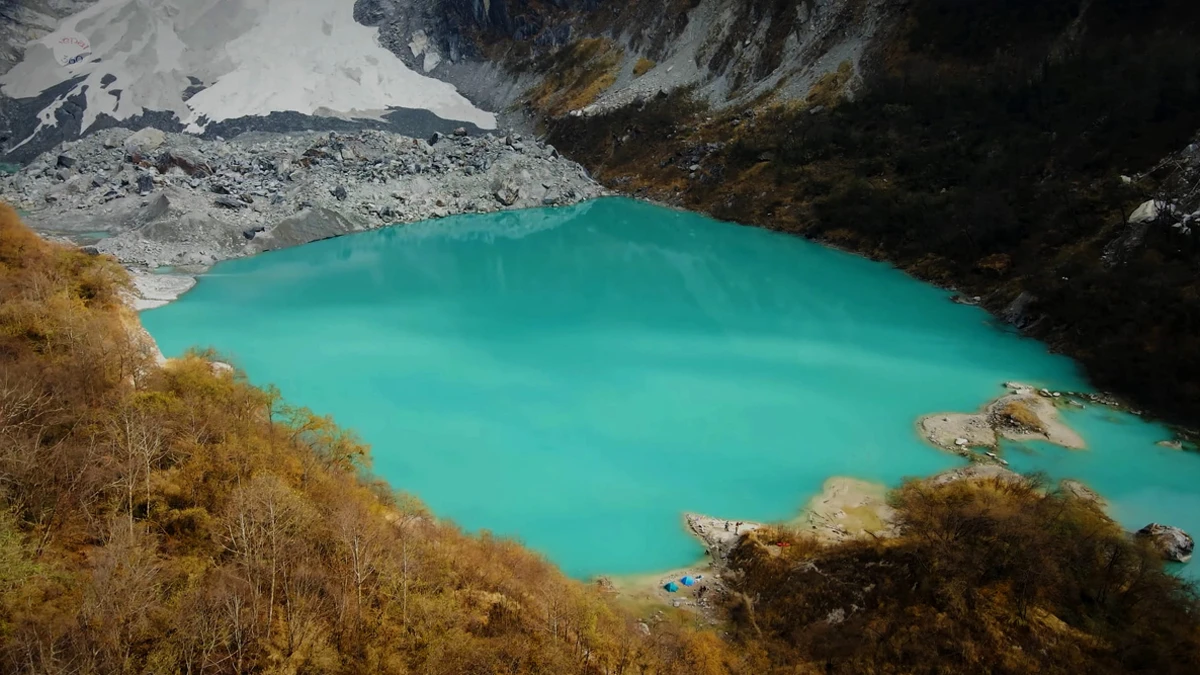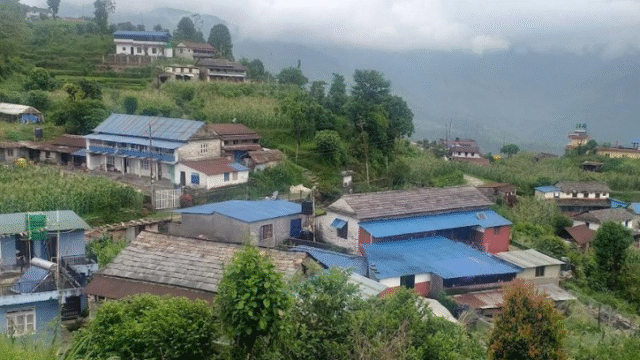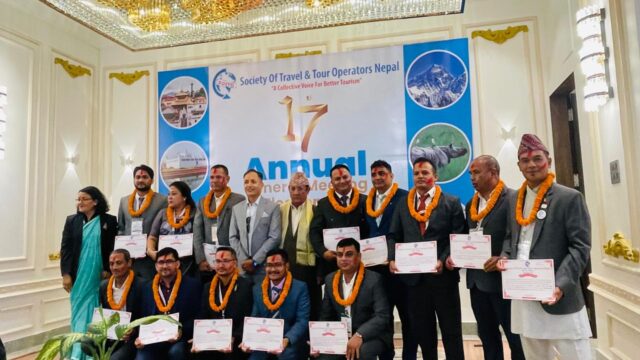The scenic Kapuche–Kori trekking trail in Madi Rural Municipality–1 of Kaski district is undergoing significant upgradation work as part of a broader effort to develop the region as a key destination for both domestic and international trekkers. The upgrade is focused on the segment of the trail stretching from Naula to Nautha and onward to Kori, a path increasingly gaining popularity among adventure and nature lovers.
Trail Upgrade Supported by Hydropower Project and Local Bodies
The trail development is being carried out with financial support of Rs. 3 million provided by the Madme Khola Hydropower Project, and with collaboration from Madi Rural Municipality–1 and local tourism and conservation committees. Devi Jung Gurung, the Ward Chair of Madi–1 and coordinator of the concerned committees, shared that Rs. 1 million worth of work has already been completed, while work worth another Rs. 2 million is currently in progress.
Highlighting the growing attraction of the trail among both local and foreign tourists, Gurung emphasized that the region is being actively developed as a trekking-based tourism hub.
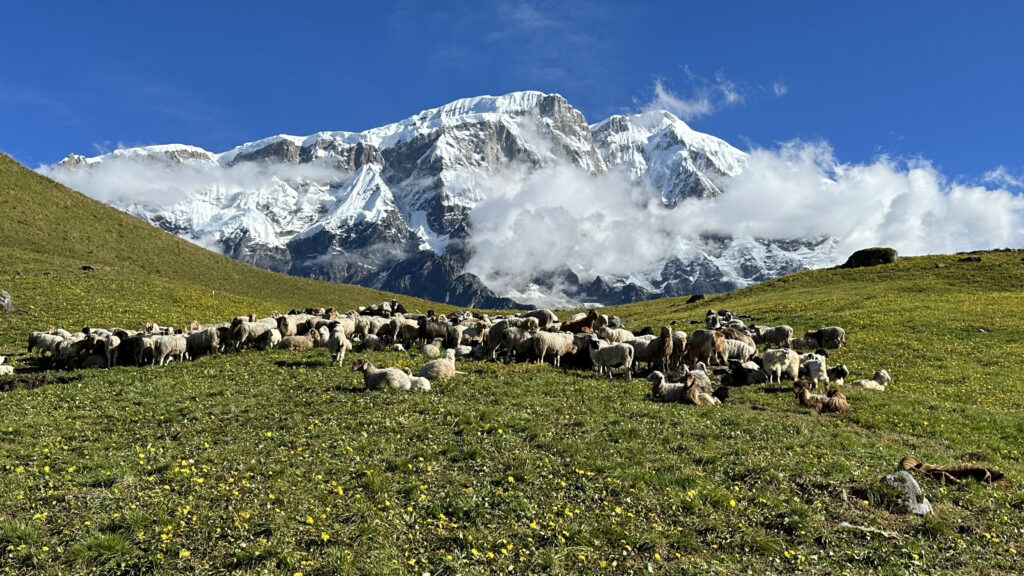
A Unique and Mesmerizing Trekking Experience
According to Krishna Gurung, Secretary of the Kapuche Tourism Subcommittee, the Kapuche–Kori trail is unique in its natural offerings. The trail links the low-altitude Kapuche Glacier Lake with the alpine meadows of Kori, allowing trekkers to witness glacial avalanches, snow-capped peaks, and colorful alpine flora along the way.
Located at an altitude of 2,421 meters above sea level, the Kapuche Lake lies between Annapurna II and Annapurna IV, and is believed to have been formed by a historic avalanche. Spanning 10,440 square meters, it is considered one of the lowest-altitude glacier lakes in the world.
The lake’s name originates from the local Gurung language, where “Kha” means snow, “Phu” refers to lumps of snow, and “Che” denotes flat terrain. Over time, the name evolved into Kapuche or Kafuche. The lake’s tranquil setting, combined with its green-blue tinted waters reflecting sunlight amidst surrounding snow and forests, makes it an irresistible destination for photographers and nature enthusiasts.
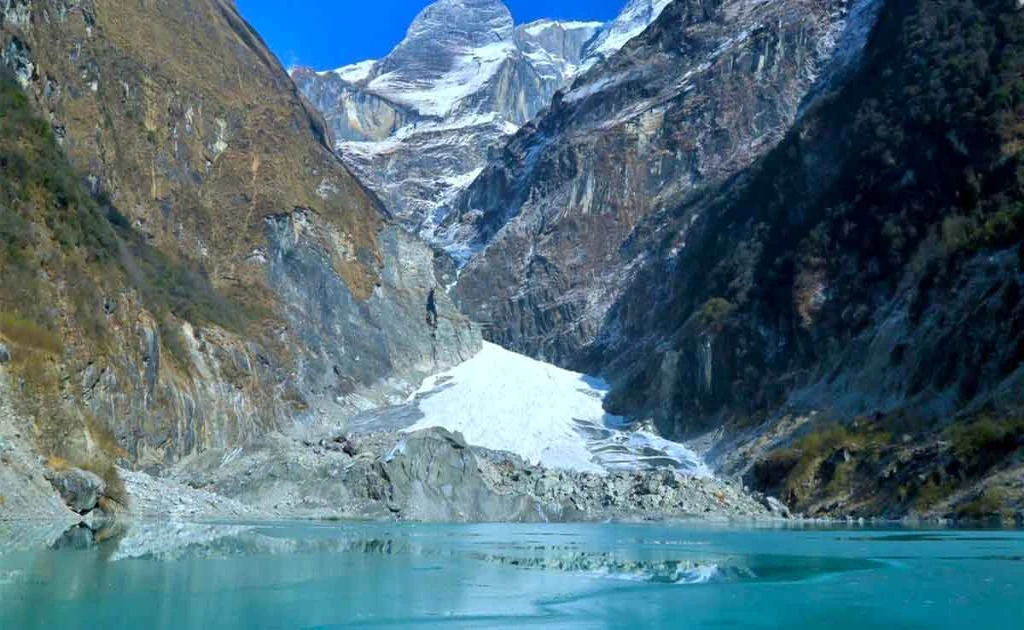
Kori: A Hidden Gem at 3,850 Meters
The trek ultimately leads to Kori Danda, situated at an elevation of 3,850 meters, offering panoramic views of Lamjung Himal, Machhapuchhre, Annapurna II and IV, and the Three Sisters peaks. The journey to Kori takes trekkers through the tourist village of Sikles, climbing through Hugu, Nautakhark, and Nautha, with the entire route taking around nine hours on foot.
During the hike, tourists can enjoy rare sightings of frequent avalanches, and traverse through dense forests, traditional herders’ huts, and mountain pastures. Krishna Gurung, who also operates Hotel Icefall, noted that rhododendron forests lining parts of the trail bloom vibrantly in spring, while summer brings wildflowers to the meadows, adding color to the landscape.
Rich in Culture and History
Kori also carries significant historical and cultural value. In ancient times, the route served as a traditional trade and travel route to Manang and Lamjung, and was known as a resting point for salt traders and herders. Today, Kori features four hotels and has become increasingly popular among domestic tourists for short treks, hiking, and holiday getaways.
Guides report that although the ascent to Kori is steep and physically demanding, the rewarding views from the top make all the effort worthwhile. “The sight of the entire mountain from root to summit takes away all fatigue,” say local trekking guides.
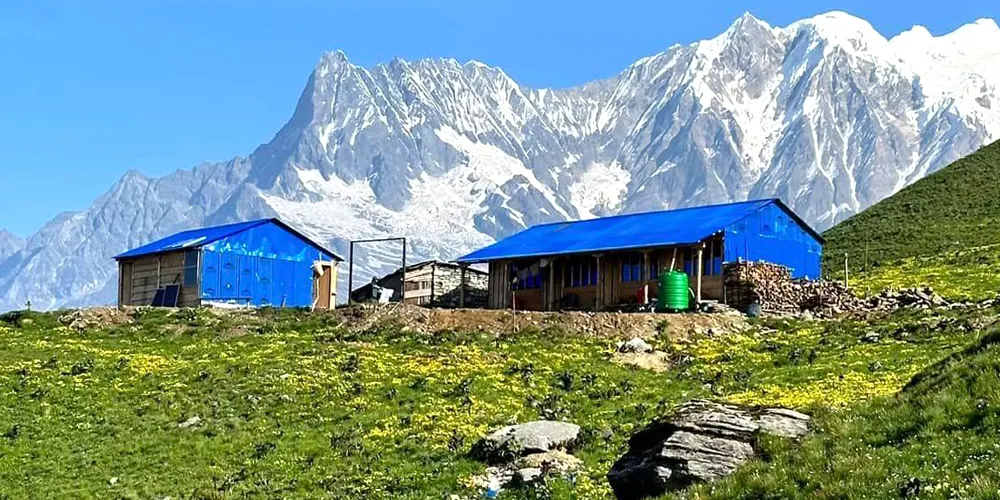
Seasonal Challenges and Restoration Plans
Despite its beauty, the trail is not without its challenges. Krishna Gurung noted that during the month of Asar (June/July), the trail becomes overgrown with shrubs, and certain segments are at risk of landslides, prompting a temporary one-month closure for safety reasons. However, he assured that the trail would reopen in Shrawan (July/August), with improvements already underway to make it safer and more accessible. With the current phase of upgradation, the trail is expected to offer an even more convenient and enjoyable experience for trekkers, supporting the growth of eco-tourism in the region.
Looking Ahead: A Future Trekking Hub
The Kapuche–Kori trail is emerging as a hidden jewel in Nepal’s trekking map, providing a less crowded yet equally mesmerizing alternative to more commercial routes like Annapurna Base Camp and Poon Hill. With improved infrastructure, increased promotion, and involvement of local communities, the trail holds immense potential to become a premier destination for those seeking solitude, cultural richness, and stunning Himalayan scenery.
As trekking routes diversify and eco-tourism gains traction, the Kapuche–Kori trail stands as an example of how sustainable tourism development, community involvement, and natural preservation can go hand in hand to create a successful tourism model.
